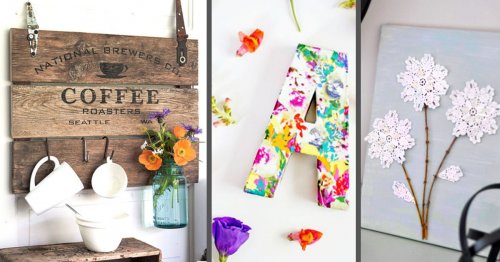
Knitting casting on may be a term you have seen in knitting. This is a technique that allows you to add new stitches without having to rely on existing stitches. It has a distinct lower edge as the name implies. Casting on is different from binding off. If you are a seasoned knitter, you will already be familiar with the cast-on technique. This is a simple way to get started with knitting if it's your first time.
Loop cast-on
The knitting loop cast-on technique creates a stitch by drawing the working yarn up from the center of the knitting loop. This is the easiest method to add stitches to your knitted project. It's ideal for creating seamless toys and top-down mitts. This technique can also be used to create centre-out blankets and shawls. A loop cast on can be used with any size of needle. Be sure to select the right size.
The cast-on with the disappearing loop is much smaller than other cast-ons. It is also less bulky than other cast-ons. To cast-on a circular piece, first make a loop with your working yarn, crossing the short end over the ball end. You will lose the loop when you knit so hold onto it with your fingers. Once you have created the loop, start knitting. Then, you can continue knitting.

Cast-on German Twisted
You might be new to knitting and wondering what the differences are between a regular cast-on edge or a German Twisted edge. German twisted casting-ons have a round needle and a stretchy edge. It can be challenging to get the right cast on edge without following certain steps. This article will provide a clear explanation of the differences between a German and standard twisted cast-on edges and help you get a better idea of each.
The German twist cast-on (also known as the Old Norwegian casting-on) is a great option to the long-tail classic cast-on. It's more stretchy than the traditional long-tail cast-on and great for projects that have to stretch like top-down socks. The long-tail cast on method can be used to learn how to make a German twisted casting. It is easy to learn. Simply place the yarn on the needle and hold it in the "sling-shot" position.
Cast-on with long tail
Long tail knitting cast-ons are the same as traditional ones, but they can be more versatile. It can be used in double and colorwork. We will be exploring the many uses this technique has. To get started with this method, you'll want to know the basics of knitting. It will soon become your favorite method for casting many stitches once you have mastered it.
A long tail cast-on is a knitter's preferred method of starting a project. It is a circular needle with one tip. It can be hard to estimate the amount of yarn needed, so take care to measure. The rule of thumb for casting on yarn is to add three times the project's width and 6 inches/15 cm. To determine how much yarn you will need, count the number of stitches you have to cast on.

Backward loop cast-on
The Backward loop cast-on is a handy way to add stitches to the middle of a row. To form an e at the back of your stitch, twist the tail of the yarn closest to you. You should work from the lower right corner to the upper left corner of the stitch. Then knit the st just like any other stitch.
If you are making 1 via backward-loop cast-on, there may be a small hole in your knitting. This is normal and will be filled with work yarn. For knitting socks and mittens with an underarm seam, the backward loop cast-on is a good choice. The join can become loose if it is used for more than a few stitches. You can replace the backward-loop cast-on by M1 increases.
FAQ
What are observation hobbies exactly?
Observation hobbies involve watching people do the things they love. This could be watching sports, reading books or going on holiday. You might also enjoy observing other people.
Observation hobbies are great because they help you learn how to think creatively. You can use this knowledge later when you're working on projects for yourself or others.
You'll discover that it's easier to learn if there's a passion for something.
You might watch or read about football to learn more. Visit or take photographs to learn more about the art of photography.
If you love to play music, there are two options: either buy a new guitar online or follow along with the songs.
If you love cooking, you can either cook your meals at home or order from a local restaurant.
If gardening is your passion, you can grow vegetables and flowers.
If dancing is something you enjoy, join a dance class.
If you love painting, you can paint pictures.
You could also write poems or stories if you enjoy writing.
You might enjoy drawing pictures, if you are a good artist.
If you are passionate about animals, you can look after them or work at the zoo.
You could choose to study biology, maths, chemistry, or physics if you are interested in science.
If history is your passion, you can either read books or watch films. Or you could listen to podcasts.
You can travel abroad or explore your home area if you love to travel.
How do I get started?
To start a new hobby, you must first decide what type of activity you would like to do.
Once you have decided on your subject, passion is the key.
It is essential to understand the reasons you want to start a hobby. This will help give you direction and provide a purpose.
Once you've decided what type of hobby you'd like to pursue, you can begin planning.
Think about the equipment that will be needed.
You should consider whether or not you will need to take classes or attend seminars.
You should ensure that you have enough space to enjoy your hobby.
It might also be worth considering joining a group or club. These groups offer support and advice.
Also, consider how much money your hobby would cost.
What is a collection hobby?
Books, movies music, comics and video games are some of the most popular collections.
You can also collect anything from stamps to coins to cars to dolls to action figures to model kits to figurines to art supplies to tools to kitchen utensils to jewelry to watches to gadgets to clothes to furniture to antiques to...
I believe you get the idea.
Statistics
- In comparison, men in the “no humor” condition were refused 84.6% of the time and were only accepted 15.4% of the time. (time.com)
- I am 100% biologically a woman (discover.hubpages.com)
- A new survey by Pew Research Center of teens ages 13 to 17 finds that 36% of girls feel tense or nervous about their day every day; 23% of boys say the same. (pewresearch.org)
- Studies show that just six minutes of reading can reduce stress levels by 60 percent. (oberlo.com)
- The Role of the Mind in Sex, Dating, and Love: Men in the “humor” condition received phone numbers from 42.9% of the female participants and were refused 57.1% of the time. (time.com)
External Links
How To
How to get started gardening
Gardening is one the oldest forms. You need patience, perseverance, and determination. The first step to starting a garden is to pick a spot where you will grow food. You could choose to plant food on a large parcel of land, or in your own backyard. Next, choose what kind of plants you would like to grow. Do you prefer vegetables, or flowers? Some people enjoy growing herbs while others love raising livestock such as rabbits. You should consider how much space you have available before deciding what types of crops you plan to plant. If your climate is cold, you may decide to plant berries and fruits.
After choosing what you want to plant you need to prepare your soil. How your plants perform is dependent on how well the soil you use. High quality soil is rich in organic matter, which feeds your plants' roots. Organic matter is made up of leaves, twigs grass clippings, manure and compost. You need nutrients to your soil after you have prepared it. Depending on the type of plants you plan to grow, you may need different amounts of nitrogen, phosphorus, potassium, calcium, magnesium, boron, zinc, copper, manganese, iron, molybdenum, chlorine, sulfur, sodium, and so on. An online fertilizer calculator can help you calculate these values. Many fertilizers are on offer, so make sure that you know which one you are buying.
After preparing your soil and adding the proper nutrients, you now need to wait until your seeds germinate. This process usually takes anywhere from 2 weeks to 3 months, depending on the weather and the temperature in your area. Once your seeds are sprouted, you must water them regularly. Watering your plants too little or too often can cause problems. Ensure you give your plants enough water at regular intervals and avoid overwatering. Overwatering can result in root rot, fungal diseases, and even death. When watering your plants, remember that most plants require less water during the warm summer months than in winter. You should also remember that some plants will need to dry out once they have been watered. For example tomatoes should be kept slightly moist and not wet. They won't tolerate soggy soil. After they have finished flowering, they must go dormant. Dormancy occurs when plants stop producing any new growth and start to store energy for the next harvest. During dormancy, the plant stops sending signals to its roots telling them to produce food. The plant continues to store energy during this time. However, the plant will die if temperatures drop below freezing or there is insufficient sunlight.
Living in urban areas may restrict the types of plants you can plant. Concrete sidewalks, roads, buildings and parking lots are all common in urban areas. These blocks block sunlight from reaching ground level. Concrete absorbs sunlight, which prevents the soil beneath from getting enough sun exposure. Many plants are unable to survive in urban areas due to the lack of sunlight. Fortunately, there are still many plants that can thrive in an urban environment. Many trees, shrubs, and perennials can adapt to city living. In addition, many annuals can be grown indoors in containers. Container gardens can be used to grow greenery indoors year-round, no matter what the weather outside.
Now that you have decided where to place your garden, chosen what you will grow, and prepared your soil, you are ready to plant!